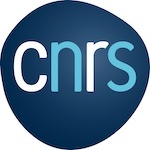CONFERENCE
Current trends in representation theory, cluster algebras and geometry
Théorie des représentations, algèbres amassées et géométrie
27 November – 1st December 2023
Scientific Committee
Comité scientifique
Vincent Pilaud (CNRS – École Polytechnique)
Sibylle Schroll (University of Cologne)
Hugh Thomas (Université du Québec Montréal)
Emmanuel Wagner (Université de Paris)
Organizing Committee
Comité d’organisation
Claire Amiot (Université Grenoble Alpes)
Thomas Brüstle (University of Sherbrooke)
Yann Palu (Université de Picardie Jules Verne)
Pierre-Guy Plamondon (Université de Versailles Saint-Quentin)
Recently, strong links have been uncovered between homological mirror symmetry and the representation theory of certain associative algebras called “gentle algebras”. This relationship opens new paths to attack long-standing problems in both worlds, allowing the application of well-understood representation theory to the study of Fukaya categories (such as in the search for good generators of the category), and that of geometric tools to study the homological properties of associative algebras (such as the search for numerical derived invariants).
In addition to their links with homological mirror symmetry, the class of gentle algebras enjoys a deep relationship with the world of combinatorics and polyhedral geometry. The homological and representation- theoretic properties of these algebras naturally lead to combinatorial objects, such as words on graphs, and geometric ones, such as polyhedra and fans. These objects are closely related to those appearing in the very active field of cluster algebras. Knot theory is also linked to these objects, notably via skein algebras and categorical braid group actions.
This conference is based on these interactions which arise from the interplay between homological mirror symmetry, representation theory, knot theory, cluster algebras, and the geometry of polytopes.
Des liens très forts ont été établis ces dernières années entre la symétrie miroir homologique et la théorie des représentations de certaines algèbres associatives appelées « algèbres aimables ». Ceci a permis d’obtenir de nouveaux angles d’attaque pour des problèmes classiques ouverts dans les deux domaines : les connaissances bien établies de théorie de représentation ont des applications dans l’étude des catégories de Fukaya (comme la recherche de bons générateurs dans ces catégories), tandis que les outils géométriques permettent d’étudier sous un nouvel angle les propriétés homologiques des algèbres associatives (comme la recherche d’invariants dérivés numériques).
Par ailleurs, les algèbres aimables ont aussi des liens très étroits avec la combinatoire et la géométrie polyédrale. Les propriétés de nature homologique ou catégorique de ces algèbres amènent naturellement à l’étude d’objets de type combinatoire, comme des mots sur un graphe, et de type géométrique, comme des polyèdres ou évantails. Ces objets sont de plus fortement reliés au domaine très actif des algèbres amassées. La théorie des noeuds est également liée à ces objets, notamment via les algèbres « skein » et les actions catégoriques de groupes de tresses
MINI-COURSES
Raf Bocklandt (University of Amsterdam) Mirror Symmetry and Fukaya categories
Gustavo Jasso (Lund University) Exact infinity categories
Arnau Padrol (University of Barcelona) Polytopal Realizations
Hoel Queffelec (CNRS – Université de Montpellier) Braids and Khovanov-Seidel categorical representation
Lauren K. Williams (Harvard University) Cluster algebras and the amplituhedron
RESEARCH LECTURES
Eugene Gorsky (University of California, Davis) Braid varieties
Sondre Kvamme (NTNU) Indecomposable representations in the monomorphism category
Yu Qiu (Tsinghua University) On cluster braid groups
Nathan Reading (North Carolina State University) Posets for F-polynomials in marked surfaces
Melissa Sherman-Bennett (MIT) Cluster structures on Richardson and braid varieties
Alexandra Zvonareva (University of Stuttgart) Lattices of t-structures and thick subcategories for discrete cluster categories






